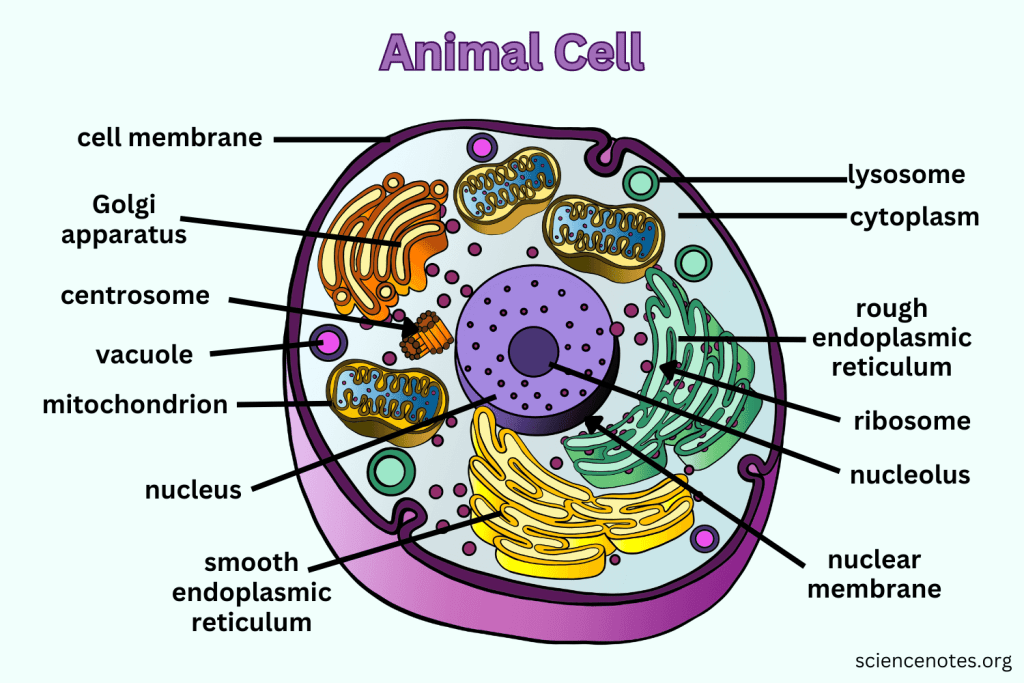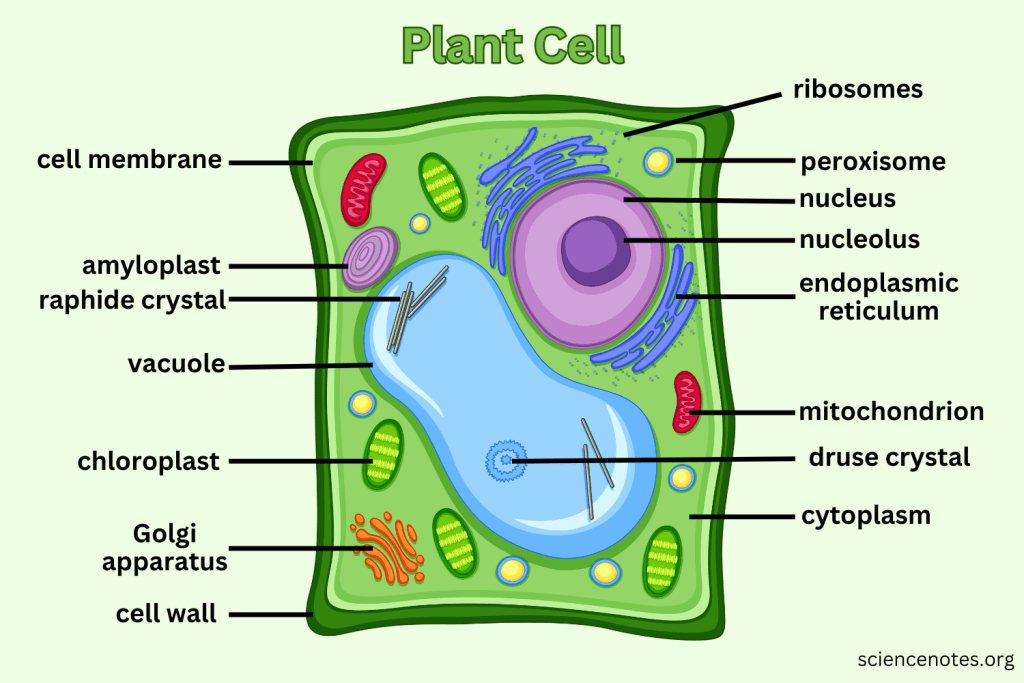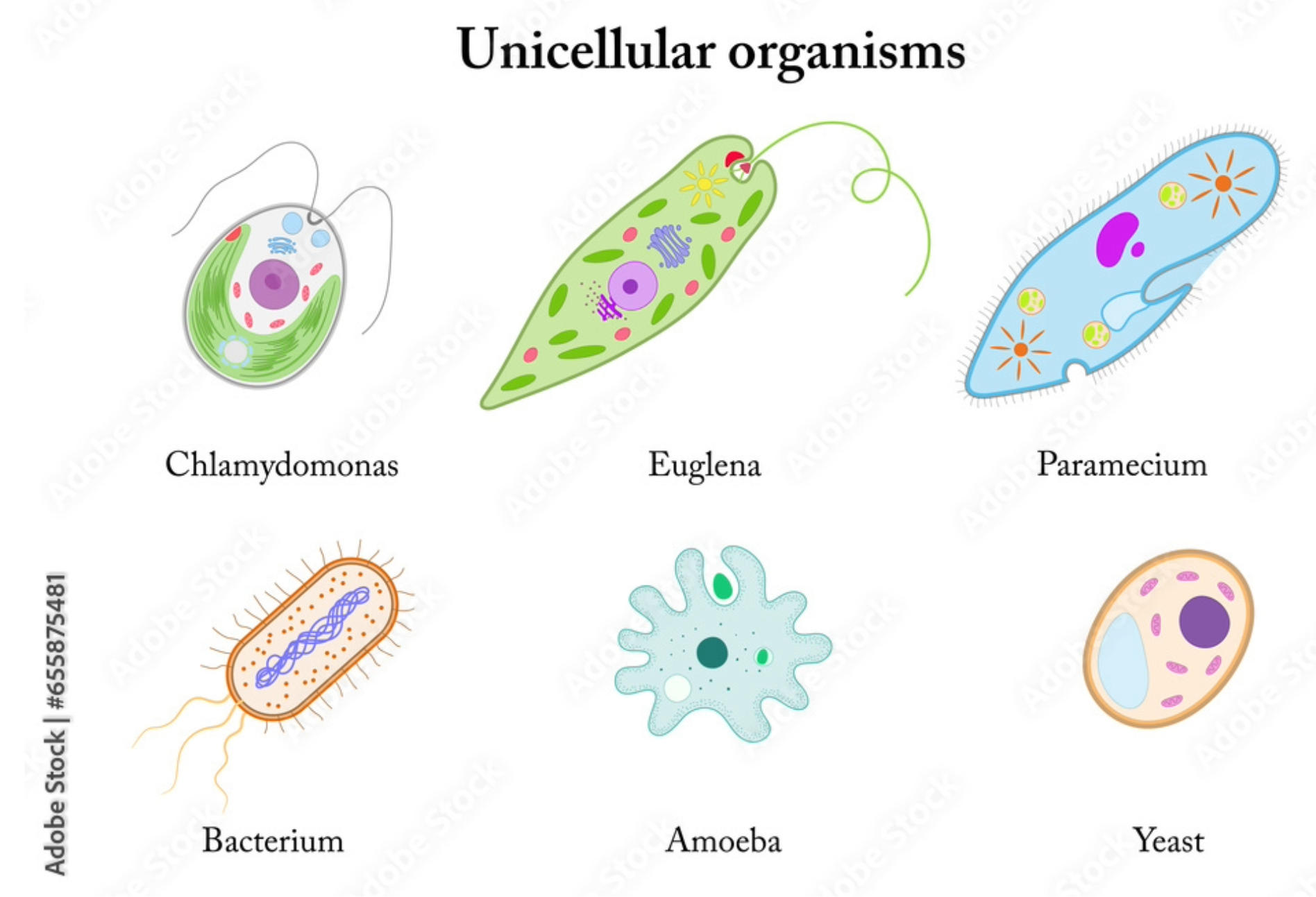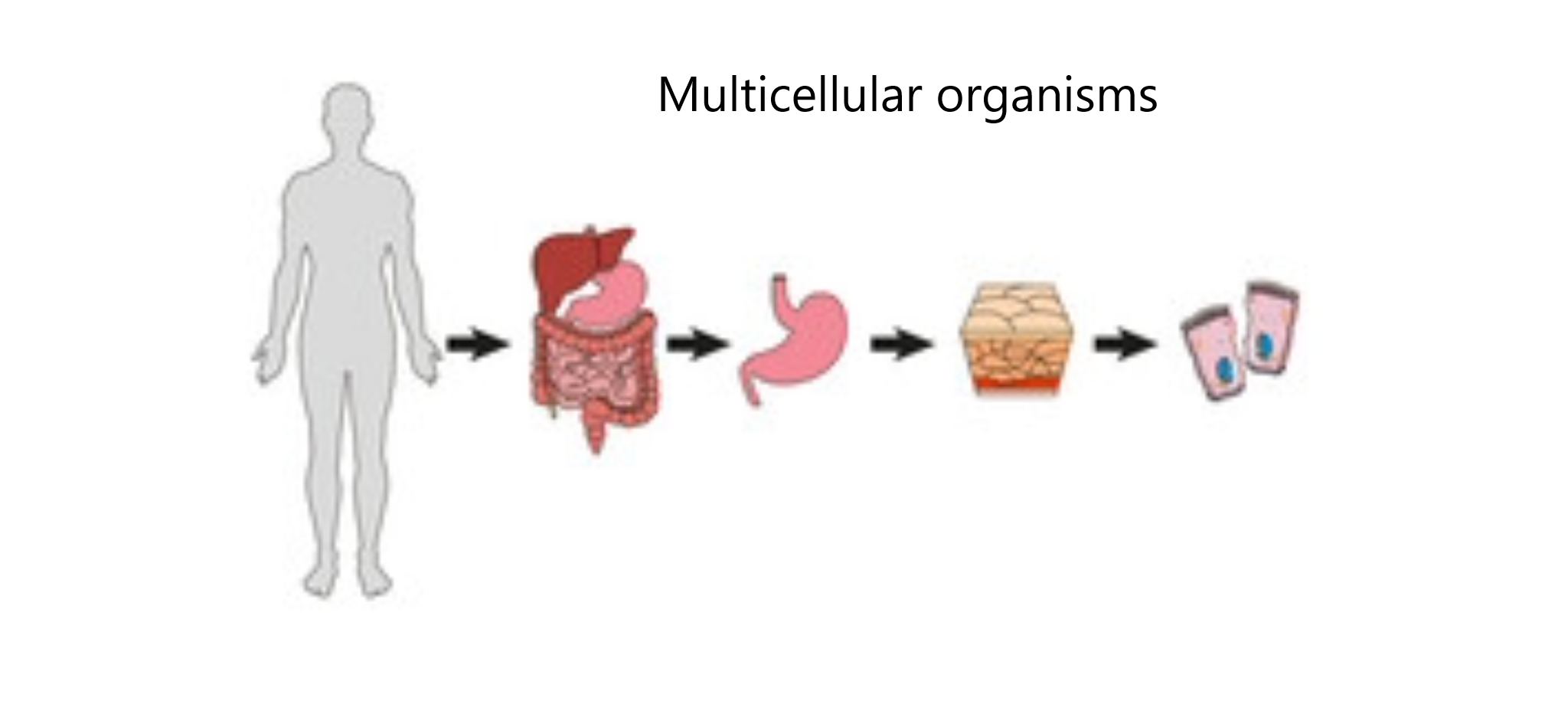Animal Cells

Plant Cells

Biology is the study of living organisms and their structure, function, growth, origin, evolution, and distribution.
It is a broad field that encompasses the study of all living things, from the smallest microorganisms to the largest plants and animals. Biologists study the structure and function of cells, the interactions between organisms and their environment, the evolution of species, and the complex processes that sustain life.
Branches of Biology


Animal cells contain many organelles, which are subunits within the cell that perform specialized functions. The organelles may be membrane-bound (enclosed within a lipid bilayer) or non-membrane bound (free in the cytoplasm). Here is a list of animal cell components and organelles and their functions:
Cell Membrane: The cell membrane or plasma membrane is a selectively permeable lipid bilayer that encloses the contents of the cell and regulates the transport of materials into and out of it.
Cytoplasm: The cytoplasm is the jelly-like fluid that gives a cell is shape and contains the molecules the cell needs for its processes.
Cytoskeleton: The cytoskeleton is a network of protein fibers that provides structural support, maintains cell shape, and enables cell movement. It is composed of three main types of protein filaments: microfilaments, intermediate filaments, and microtubules.
Nucleus: The nucleus is the control center of the cell, containing DNA and regulating gene expression. It is surrounded by a double-layered nuclear envelope or nuclear membrane that has nuclear pores that allow the exchange of materials between the nucleus and the cytoplasm.
Nucleolus: Located within the nucleus, the nucleolus is the site of pre-ribosome production.
Mitochondria: Often referred to as the “powerhouse” of the cell, mitochondria are responsible for generating energy in the form of adenosine triphosphate (ATP) through cellular respiration.
Endoplasmic Reticulum (ER): The ER is a network of membrane-bound tubes and sacs involved in the synthesis, folding, and transport of proteins and lipids. There are two types of ER: the rough ER, which is studded with ribosomes and involved in protein synthesis, and the smooth ER, which is responsible for lipid synthesis and detoxification.
Ribosomes: These small structures, composed of RNA and proteins, are the sites of protein synthesis within the cell. They can be found either free-floating in the cytoplasm or attached to the rough ER.
Golgi Apparatus: The Golgi apparatus is responsible for modifying, sorting, and packaging proteins and lipids for transport to their final destinations within or outside the cell.
Lysosomes: Lysosomes are membrane-bound organelles containing enzymes that break down waste materials and cellular debris, playing a crucial role in the recycling of cellular components.
Peroxisomes: These small organelles contain enzymes that neutralize toxic substances and break down fatty acids, contributing to cellular detoxification and energy production.
Centrosome: The centrosome is an organelle found in animal cells, but not plant cells. It is a small organelle near the nucleus with radiating tubules. The centrosome produces and organizes microtubules and regulates cell division so that the cell contents equally divide between daughter cells.
Plant cells comprise several organelles, each with unique functions vital to the cell’s operation:
Cell Wall: The cell wall is a rigid layer that provides support, protection, and shape to the cell. It consists mainly of cellulose.
Plasma Membrane: This is a semi-permeable membrane that controls the movement of substances in and out of the cell.
Nucleus: The nucleus is the control center of the cell, containing DNA that directs all cell activities. The nuclear membrane is a double-membrane structure with nuclear pores that encloses the nucleus and regulates transport and communication with the cytoplasm.
Mitochondria: Often referred to as the powerhouse of the cell, mitochondria produce ATP through a process called cellular respiration.
Chloroplasts: These are the sites of photosynthesis, where sunlight, carbon dioxide, and water change into glucose and oxygen. Chloroplasts contain a green pigment called chlorophyll, which captures light energy.
Peroxisomes: Plant peroxisomes perform a key role in photorespiration and produce plant hormones.
Endoplasmic Reticulum (ER): ER is a network of membranous tubules and sacs where lipid synthesis and protein folding occur. The rough ER, studded with ribosomes, synthesizes proteins, while the smooth ER performs lipid synthesis.
Golgi Apparatus: The Golgi apparatus modifies, sorts, and packages proteins and lipids for transport to their final destinations within or outside the cell.
Ribosomes: These are the sites of protein synthesis. They are either free in the cytoplasm or bound to the ER.
Vacuoles: Plant cells contain a large central vacuole that stores water and helps maintain turgor pressure, supporting the cell’s structure. Druse and raphite crystals occur in some plant vacuoles. These crystals of calcium oxalate and calcium carbonates deter herbivores and also store minerals for the cell.
Cytoskeleton: Just like in animal cells, plant cells also contain a cytoskeleton. The cytoskeleton is a network of protein fibers in the cytoplasm that provides structural support and plays a key role in cell division and the transport of materials within the cell.
Plasmodesmata: These are small tubes that connect plant cells to each other, allowing direct communication and transport of substances between them. This is a unique feature of plant cells not found in animal cells.
All living this are made up of cells. This can be a unicellular (single) cell organisim like a Bacteria or like a Human which is a multicellular organism with trillions of cells. Cells are the basic building blocks of life.
Unicellular organisms, such as bacteria and protists, are composed of a single cell that performs all the functions necessary for life. These organisms have a variety of shapes and structures, but they all share the basic features of a cell, including a cell membrane, cytoplasm, and genetic material. Unicellular organisms are able to carry out all the essential life processes, such as respiration, reproduction, and metabolism, within a single cell. They are found in a wide range of environments, from the deepest oceans to the hottest deserts, and play a crucial role in many ecosystems.
Multicellular organisms, such as plants and animals, are composed of many cells that work together to perform the various functions necessary for life. These cells are organized into tissues, organs, and organ systems, each with a specific role to play. Multicellular organisms have a greater level of complexity than unicellular organisms, with specialized cells performing specialized functions. This allows for a more efficient and effective use of resources, as well as the ability to carry out more complex processes. Multicellular organisms also have the ability to grow and develop, with cells dividing and differentiating to form the various structures and systems of the organism. This allows for a greater degree of adaptability and the ability to respond to changes in the environment.


Adobe stock photos
Insects are a class of small invertebrate animals within the arthropod phylum. They have a chitinous exoskeleton, a three-part body (head, thorax, and abdomen), three pairs of jointed legs, compound eyes, and one pair of antennae. Insects are the most diverse group of animals on Earth, with over a million described species.

